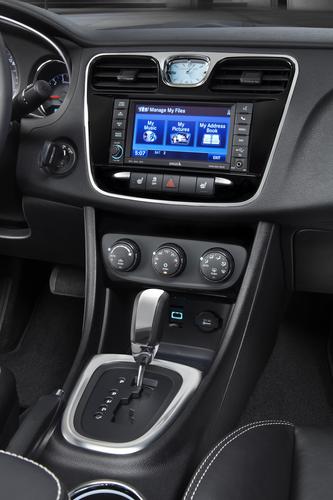How cloud accelerates development and delivery of in-car software

These days, nobody is making cars anymore -- they're computers on wheels. With so much software going into cars, development teams are hard-pressed to deliver software early and deliver often. Enter the cloud, which is helping to speed things up.

John Penoyer, group manager of engineering at Panasonic, recently described how and why his team adopted cloud for their line of in-vehicle systems. In a new BrightTalk webcast, he described how the Panasonic team moved its development platforms out of its Atlanta-based data center and deployed it to the cloud, with the help of Electric Cloud and CloudOne.
The team writes code for increasingly sophisticated in-vehicle systems, such as the UConnect system now on Chrysler consoles. As demand and sophistication in these systems has grown, so has pressure to deliver highly functional embedded software within a years' time.
There are three main advantages Penoyer's operation has gained from moving development into the cloud:
Deliver ever-larger applications and a faster pace. Penoyer points out that development cycles for in-car systems have grown very intense. He illustrated, for example, how just a few years ago, jet fighters and airliners ran on software with up to six million lines of code. "Current and future new cars have in excess of 100 million lines of code," he says. In addition, there is growing complexity, with numerous modules within each vehicle. "In many cases these modules comes form 20 different suppliers. There’s a module in virtually every body panel, every compartment. And there are many networks across the vehicle system."
Just five years ago, he adds, a typical car dashboard had a a monochrome display with a lot of physical buttons. "Now if you go into the dealer showroom, you’re likely to see a 7, 8 or 9-inch display, and front center on the screen is a touchscreen that looks more like what you’d see on an iPhone or iPad." In addition, memory size has "gone from a few megabytes up to 8 or 16 gigabytes," he adds. "Our software distribution for a release for one range of these products is in excess of 125 GBs."
As a result, Penoyer explains, "we have a need to go much faster than previously, when we had luxury of two to three-year product development cycles. We're being asked to develop products in year-and-a-half development cycles that are more on a par with what consumers are seeing on cellphones." This requires more people, as well as greater bandwidth that cloud services can provide, he says. "We sized our environments to what we thought would allow for growth, with products that were maybe a couple of megabytes." In addition, software builds were taking longer on the original on-premises system. "We added the biggest and baddest machines we could get, and it still was taking from 10 minutes to 20 minutes to 30 minutes for builds. One of our latest projects was 117 minutes for build time. We couldn’t have 100 developers waiting around for a build to complete, to see whether they completed their action on them or not."
Provide consistent access to development teams all across the globe. With its tight delivery deadlines, Panasonic has been expanding its developer workforce to teams across the globe, enabling 24x7 development cycles. However, it was difficult for remote teams to work off the U.S.-based data center. "While everyone in Atlanta had good access to the development environment, we weren’t able to involve each of our other development centers in India and Japan and Europe in the same way," Penoyer says. "Those guys were linked, but they weren’t able to see the same processes, see the same things and use all of the same toolsets in the same ways." As a result, remote teams often created workarounds. With everyone now work through the same cloud services, "each of the development sites is operating on the same processes. We ended up consolidating that in the cloud so everyone had the same experience for authentication, so we gave everybody access to the same toolset."
Add new solutions without fuss or muss: The Panasonic team can now quickly add functions by tapping into its cloud ecosystem -- without going through financial and procurement on-boarding processes for new software purchases. "If we identify a tool that helps us -- whether it's a modeling tool or a requirements management tool -- there’s a fairly long sales cycle or negotiation that goes on if we have to bring a new vendor in," he explains. "The SaaS model is incredibly powerful. If we identify a partner who is already in our cloud environment, we can start a proof of concept with little more than a phone call."